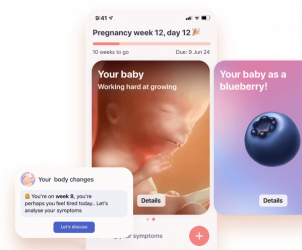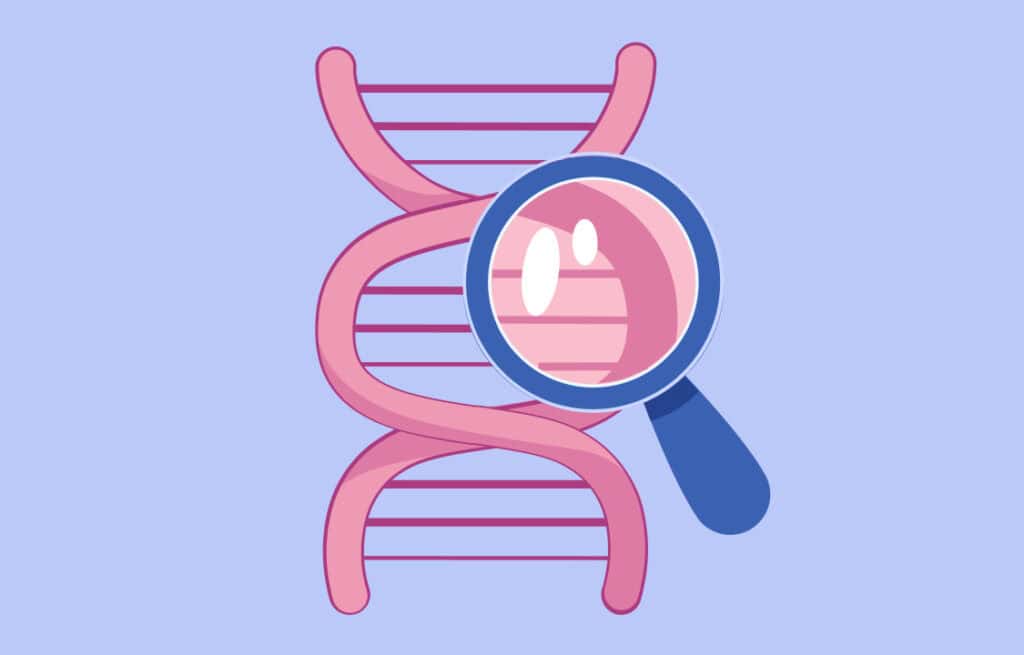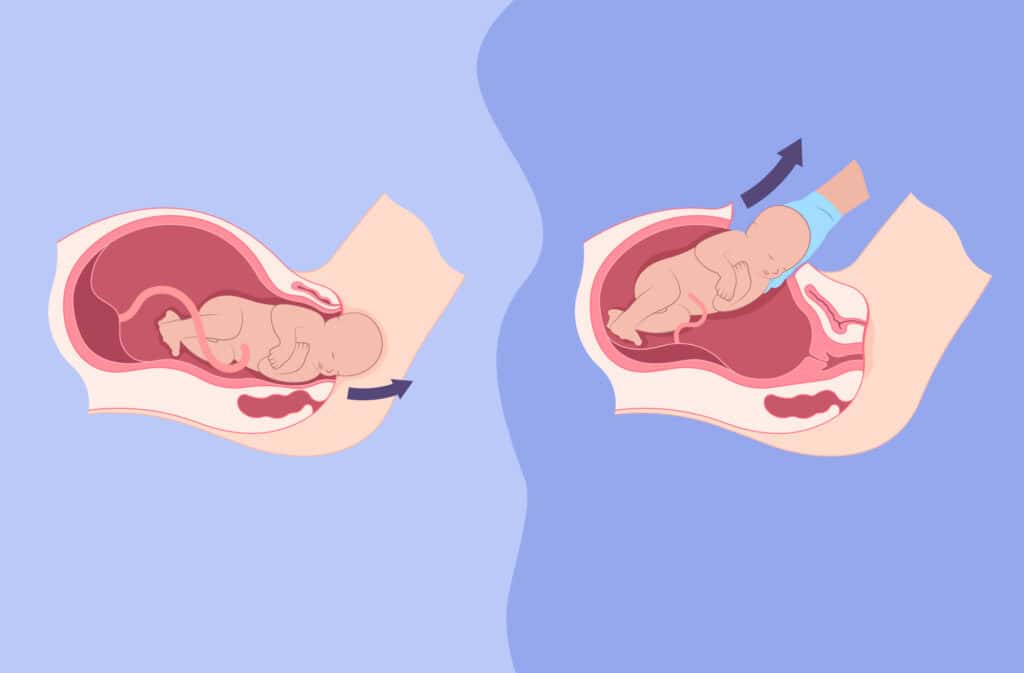Femia > Health Library > Being a mom > Raising a baby > 7-month sleep regression: why your baby won’t sleep and how to fix it
7-month sleep regression: why your baby won’t sleep and how to fix it

- Updated Feb 20, 2025
- Published
CRAFTED BY HUMAN
Crafted by human At Femia, we provide accurate and up-to-date information at every stage of your journey, from trying to conceive, pregnancy and postnatal support. All content is created by a real person based on in-depth research and own professional experience. Femia ensures that you will receive expert advice, strict accuracy and a personalized approach from our authors/medical experts. Learn more about our editorial policy.
FACT CHECKED
Fact checked At Femia Health, we maintain the highest standards of editorial excellence in delivering content focused on helping you conceive, guiding you through pregnancy, and supporting you postpartum. Explore our content review principles to learn how we ensure the accuracy and quality of our health and lifestyle tips for every stage of your journey.
A 7-month sleep regression refers to a temporary period when a baby experiences disrupted sleep, wakes up frequently, and becomes fussier than usual. It’s a normal part of development that is influenced by milestones like sitting up, crawling, teething, increased awareness, changes in nap routines, and it can last anywhere from a few days to several weeks.
Some of the most effective strategies to help your baby sleep better during regressions are:
- Establishing a consistent bedtime routine
- Creating a soothing environment
- Adjusting sleep schedules
- Managing additional symptoms, such as teething
Becoming a new parent can be somewhat overwhelming, though exciting. In the first months, you’ll learn a lot about your newborn and what being a parent is like, and you’ll likely face a few challenges along the way.
7-month sleep regression is one of the first big challenges. Watching your little one struggle to sleep can feel distressing. Yet, the truth is that 7 months is a common time for such challenges.
In this article, we’re going to define 7-month-old sleep regression, discuss its signs, and offer practical tips on how to help your baby sleep better.

What is the 7-month sleep regression?
Sleep regression is the phenomenon when, all of a sudden, a newborn stops sleeping well. This phenomenon is typically accompanied by multiple wake-ups and, often, crying and fussing when they’re awake.
Sleep regressions can happen at different times and for various reasons. They are commonly noticed at around 4, 7-10, 12, and 18 months.
Why is there a 7-month sleep regression, in particular? Regressions that take place around 7 months are among the most common ones. Developmental milestones, such as learning to sit and crawl, can temporarily disrupt a baby’s sleep as they adjust to new physical and cognitive changes
👉Find out more: 10 foods to avoid while breastfeeding: What to skip for a healthy baby and milk supply
Signs of the 7-month sleep regression
Not all newborns deal with tangible sleep regressions. Sometimes, especially if your baby is a tricky sleeper, you may not notice any 7-month sleep regression signs at all. Still, since they are very common, it’s important to prepare for sleep regressions. Besides, sleep patterns are among the primary newborn cues that can signal discomfort or other issues so it’s important to recognize the primary signs.
These include:
- Protesting against bedtime and a longer time needed to fall asleep.
- Shorter nap time and frequent wake-ups at uncommon times.
- More restlessness, fussiness, and crying.
- Separation anxiety.
Why is my 7-month-old not sleeping?
Early morning and multiple at-night wake-ups can be incredibly tiring both to a newborn and parents. Yet, the very first question that typically pops up in a mother’s head is–why is my 7-month-old suddenly not sleeping well?
The three most common reasons for that are:
Developmental milestones
Babies are going through a number of developmental milestones between ages 7 to 9 months.
The key milestones include:
- Hand-eye coordination improvement
- Motor skills development (e.g. sitting, crawling, and first standing attempts)
- Active communication development
- Separation and stranger anxiety
- Teething
These milestones create certain physical and emotional changes in a baby. Your baby needs time to adjust to these changes, which often causes discomfort. Hence, these milestones can be the primary reason for extra fussiness and sleep disruption.
Changes in sleep cycles and increasing awareness
The natural sleep patterns change as your baby develops. Most newborns do not sleep for long uninterrupted stretches at night, and many still wake up frequently until at least 3–6 months of age. By 7 months, many babies begin transitioning to a different sleep pattern, which may include longer nighttime sleep. However, this shift can temporarily disrupt their routine.
Additionally, at around 7-month-old children are actively going through cognitive leaps. They are quickly learning new skills and gaining more awareness. As they become more aware of the world around them, they are also becoming more active, and their sleep may be affected.
Nap transitions
At 1 month, babies are recommended to get 15.5 hours of sleep over a 24-hour period, including several naps during the day.
Around the age of 7 months, most newborns need less sleep–a total of 14 hours in a 24-hour period. To adjust to this change, many parents gradually transition their babies to a different sleep schedule, reducing daytime naps from three to two. This transition can also happen naturally.
These nap transitions may also cause temporary sleep regressions that can last until your baby gets used to a new schedule.
How long does the 7-month sleep regression last?
After detecting the problem and understanding its causes, the next question that bothers many parents is–how long does 7-month sleep regression last? According to the Association of Professional Sleep Consultants, this phenomenon can last anywhere between several days to several weeks.
The exact duration of regression is hard to predict. It depends on the causes of regression, a newborn’s development, previous sleep patterns, and the surrounding environment.

How to help your baby sleep better during the 7-month sleep regression
There are several primary tips for managing 7-month-old sleep regression and helping your baby sleep better:
Establish a consistent bedtime routine
A consistent bedtime ritual can help your baby learn the difference between day and night by reinforcing their natural circadian rhythms. When a newborn gets used to this, they will naturally slow down and prepare mentally for bedtime when it’s around the right time. Besides, such rituals can help a baby feel more comfortable, which can be helpful during regressions.
The main parts of a good and consistent bedtime ritual include:
- Going to sleep at the same time.
- Putting a baby to sleep in the same place.
- Giving your newborn a soothing bath.
- Complementing a bedtime feed with cuddles.
- Using additional calming techniques, such as lullabies, book reading, infant massage, etc.
👉Find out more: Can you take antibiotics while breastfeeding? What you need to know
Create a soothing sleep environment
Whether you’re putting your baby to sleep during the day or at night, the right environment can signal them that now is the time to sleep, soothing and calming them down. To create an environment that is maximally comfortable, minimize the surrounding sounds and keep the lights low.
Adjust nap schedules and wake windows
Sleep cycles and patterns are adjusting naturally as your baby grows. Hence, when dealing with 7-month sleep regression, it is helpful to observe how these patterns are changing and adjust your nap schedule and awake windows to your baby’s circadian rhythms.
For example, gradually switch to fewer naps. Also, consider putting your newborn down when they start looking drowsy–this can help establish a clear transition from being awake to falling asleep.
Managing teething discomfort and separation anxiety
Pay close attention to the specific 7-month sleep regression signs that your baby shows, as they can help you determine the cause of the regression and take additional steps to help your baby sleep better.
For example, if you notice your baby being especially restless and fussing when you leave them alone, this might be a sign of separation anxiety. Managing it is possible by practicing short separations, encouraging games that imply separation, and leaving something comforting (e.g. a toy) when you leave.
On the other hand, if you notice signs like drooling, cheek rubbing, loss of appetite, and the like, it might be teething that’s causing all these symptoms and sleep regression. In this case, find ways to mitigate teething discomfort by using teething gels and tablets, giving your baby a gum massage, buying teething rings, etc.
When to seek professional help
When facing a sleep regression, it’s quite natural to worry and wonder “Why won’t my 7-month-old sleep?” Yet, it’s important to note that regressions are a normal part of a baby’s development. They can take place at different stages of growth and have many causes behind them. However, in most cases, this phenomenon is temporary and shouldn’t be a cause of concern.
Since it’s a natural occurrence, sleep regression at 7 months typically doesn’t require professional help. Nevertheless, you may want to talk to a healthcare provider if sleep disruption persists for more than a few weeks. Also, it might be helpful to look out for additional signs that might signal an underlying issue, such as:
- Sudden stop of healthy weight gain
- Breathing abnormalities
- Snoring
- Peeing problems
- Feeding issues
Questions from the Femia community
Is the 7-month sleep regression worse than the 4-month one?
Sleep regressions can happen multiple times and at different ages, with the most common ones at 4 and 7 months. So what’s the worst sleep regression? In reality, it is very individual. However, the 4-month regression is generally considered a permanent sleep shift, whereas the 7-month one is usually temporary.
Can sleep training help during the 7-month sleep regression?
Yes, establishing a consistent bedtime routine and implementing gentle sleep training approaches can improve sleep patterns during regressions. Consistency is key to developing healthy and lasting sleep habits.
Should I feed my baby at night during sleep regression?
If your baby was already sleeping through the night before the regression, feeding them during wake-ups is not recommended as it can turn into a habit. Instead, you should try soothing them in other ways so that they go back to sleep.
Does the 7-month sleep regression affect naps too?
Yes, whether it’s caused by developmental milestones or increased awareness, sleep regression can also affect naps, making them shorter. You can also find it harder to soothe a baby during the day due to increasing activity.
The bottom line
7-month-old sleep regression is a natural part of a baby’s development. It’s a phenomenon when a newborn stops sleeping well all of a sudden and it can be affected by a number of factors, including developmental milestones, changes in sleep cycles, increasing awareness, and nap transitions.
What does 7-month-old sleep regression look like? Typically, it comes along with disrupted sleep, frequent wake-ups, difficulty falling asleep, and fussiness.
Although this is a natural process that has a temporary nature, it can be very tiring both for you and your child. Thus, establishing a consistent bedtime routine, creating the right environment, adjusting sleep schedules, and managing additional symptoms can help ease the tension. Additionally, seeing a doctor might be a good idea if regression lasts for more than a few weeks or if you notice additional, distressing symptoms.
References
- “Understanding and Navigating Sleep Regressions.” Penn Medicine. https://www.lancastergeneralhealth.org/health-hub-home/motherhood/the-first-year/understanding-and-navigating-sleep-regressions.
- “Sleep in Infants (2-12 Months).” Nationwide Children’s. https://www.nationwidechildrens.org/specialties/sleep-disorder-center/sleep-in-infants
- “Infant development: Milestones from 7 to 9 months.” Mayo Clinic, 22, Dec. 2022. https://www.mayoclinic.org/healthy-lifestyle/infant-and-toddler-health/in-depth/infant-development/art-20047086.
- “Newborn-Sleep Patterns.” Children’s Hospital of Philadelphia. https://www.chop.edu/pages/newborn-sleep-patterns.
- Amber LoRe, Alan Salem. “1 month / 4 week old sleep schedule: Bedtime and nap schedules.” Huckleberry, 11, Feb. 2025. https://huckleberrycare.com/blog/1-month-old-sleep-schedule-and-development.
- Amber LoRe, Gina M. Jansheski. “7 month old sleep schedule: Bedtime and nap schedule.” Huckleberry, 31, Jan. 2025. https://huckleberrycare.com/blog/7-month-old-sleep-schedule-and-development.
- “7 Month Sleep Regression Signs.” Association of Professional Sleep Consultants, 3, Mar. 2023. https://internationalsleep.org/2023/03/03/7-month-sleep-regression-signs/.

Genetic carrier screening reveals whether you have a gene for a certain genetic disorder. Take action and assess the risk of passing on genetic disease even before conception.

Explore the differences between C-sections and vaginal births including risks recovery time and what factors you should consider before making a choice.

Did you know your clitoris can be the key to unlocking your orgasm? Follow this guide for enhancing your clitoral satisfaction, and maximizing your sexual experience.

